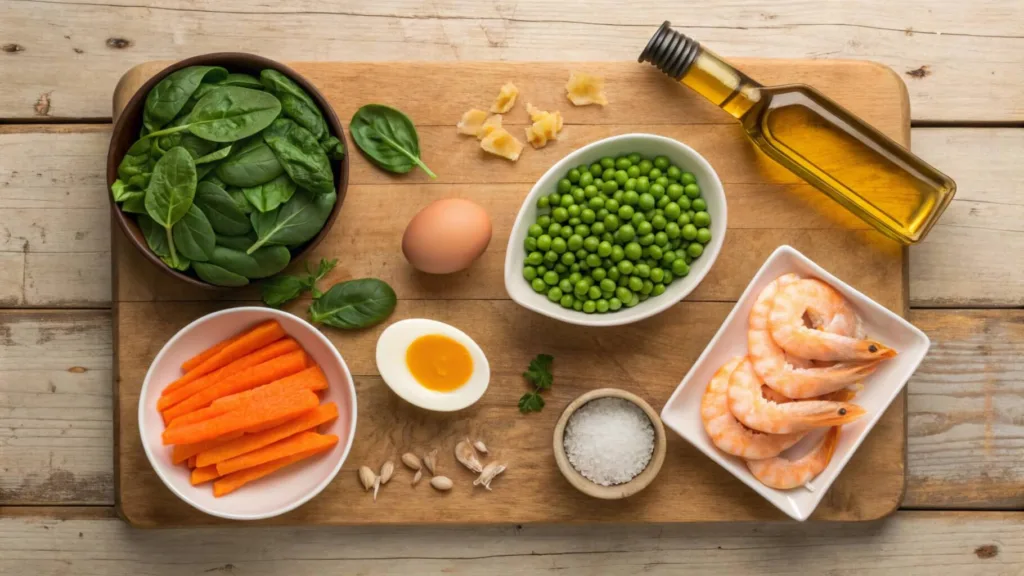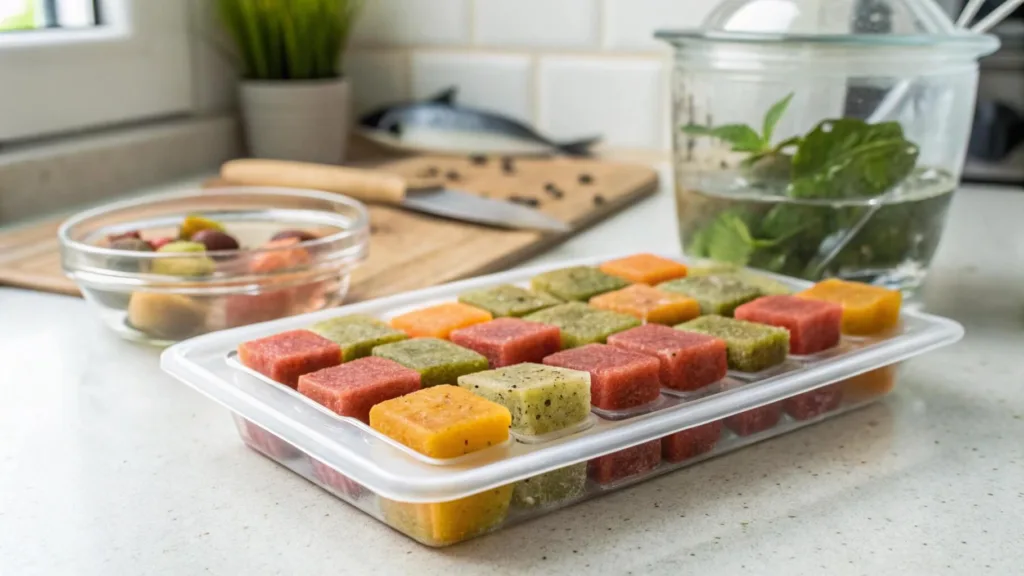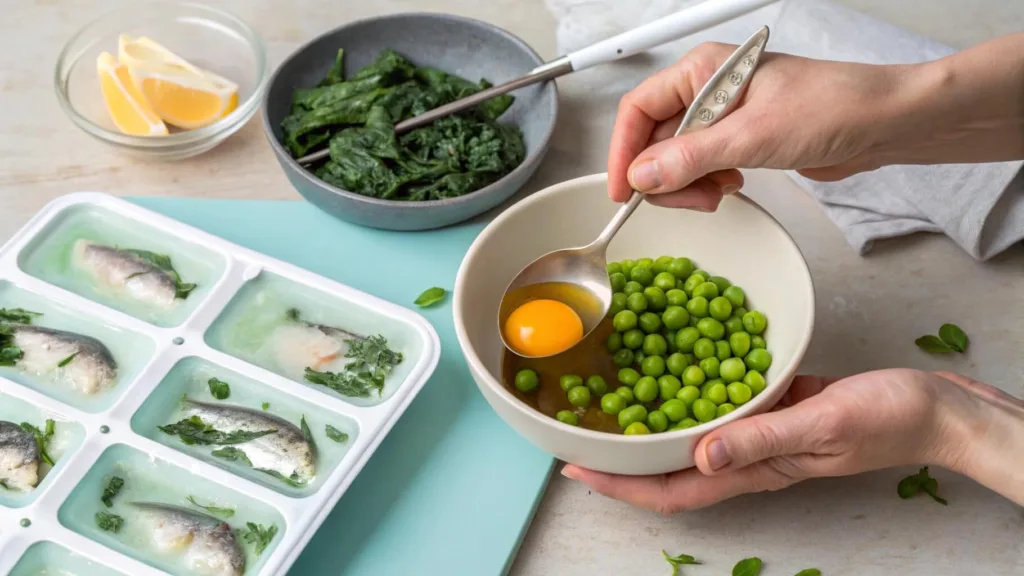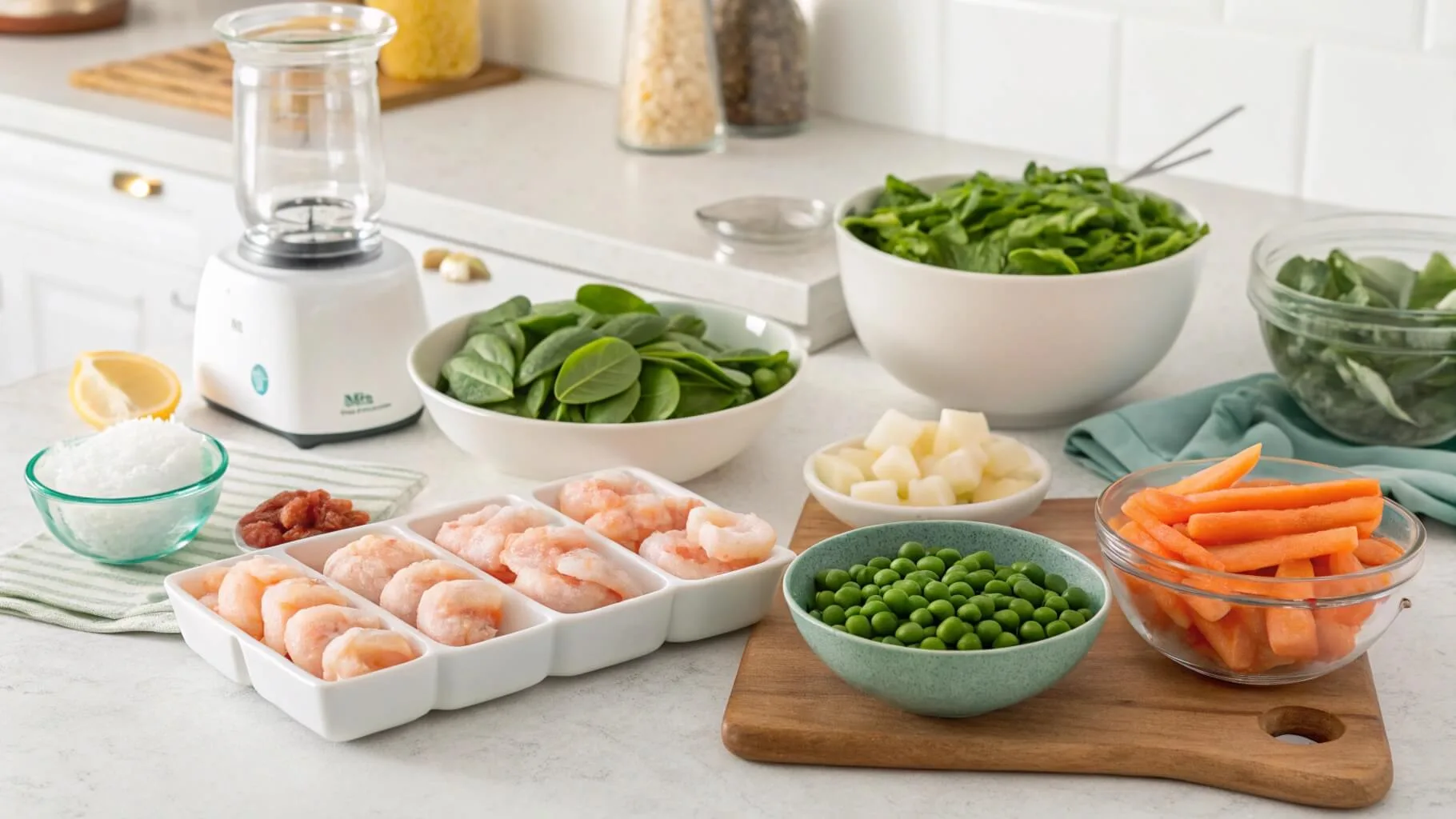If you’re a fish keeper, you already know how rewarding it is to watch your fish thrive in their underwater world. But here’s the thing: their health and vibrancy often depend on what they eat. While store-bought flakes and pellets are convenient, have you ever thought about trying a homemade fish food recipe? It’s easier than you might think, budget-friendly, and gives you full control over what your fish are eating.
This guide covers everything you need to know about crafting the perfect fish food recipe—from why it’s a great idea to the essential nutrients, common ingredients, and simple recipes to help your fish stay happy and healthy.
Why Homemade Fish Food Recipe?
There’s something special about feeding your fish with food you made yourself. It’s not just about saving money (though you definitely will); it’s about knowing that every ingredient is fresh and tailored to your fish’s dietary needs.
Store-bought fish food is convenient, but it’s often loaded with fillers, preservatives, and ingredients you can’t even pronounce. These can lead to poor water quality in your tank and even health issues for your fish. With homemade food, you’re in the driver’s seat. You can customize the recipe to match your fish species and their dietary preferences.
And let’s be honest—there’s a bit of pride in watching your fish gobble up something you made for them. It’s like cooking dinner for family, but, you know, smaller and with fins.
Essential Nutrients for Fish
Fish have specific dietary needs that vary depending on their species, but there are a few universal requirements:
- Protein: This is the cornerstone of most fish diets, especially for carnivores and omnivores. Protein supports growth, energy, and overall health.
- Fats: Healthy fats are important for energy and vibrant coloring. Omega-3 fatty acids, for example, are essential for many species. If you’re curious about the benefits of Omega-3s in general, you can learn more about them on Healthline.
- Carbohydrates: While not a major part of a fish’s diet, carbs can provide quick energy and support digestion.
- Vitamins and Minerals: Just like humans, fish need a range of vitamins (like A, D, and C) and minerals (like calcium and phosphorus) to thrive.
- Fiber: Herbivores and omnivores need fiber to aid digestion. This often comes from plant-based ingredients.
Understanding these nutrients is the first step to creating a balanced and nutritious homemade fish food recipe.
Common Ingredients for Fish Food Recipe
The beauty of making fish food at home is that you don’t need anything unfamiliar or hard to find. Many ingredients are probably already in your kitchen or can be picked up easily at the grocery store. Here’s a quick rundown of common ingredients:

- Protein Sources: Shrimp, fish fillets, boiled chicken (in small amounts), earthworms, and eggs.
- Vegetables: Spinach, peas, zucchini, carrots, and kale. Make sure to blanch or steam them for easy digestion.
- Grains and Seeds: Rolled oats, quinoa, and chia seeds can add bulk and nutrients.
- Binders: Gelatin and agar agar are commonly used to hold the food together in a solid form.
- Oils: A small amount of fish oil or cod liver oil can add essential fats.
Avoid ingredients like salt, spices, and anything processed. Remember, this isn’t a recipe for you—it’s for your fish!
Understanding Fish Dietary Needs
Fish aren’t all the same when it comes to food. Depending on their species, they may fall into one of three dietary categories:
- Herbivores: These plant-loving fish thrive on algae, veggies, and other plant-based foods. Think plecos and some cichlids.
- Carnivores: These fish need a diet rich in protein from animal sources. Betta fish and many predatory species fall into this category.
- Omnivores: The easiest to feed, these fish enjoy a mix of both plant and animal-based foods. Most community fish, like guppies and mollies, are omnivores.
Knowing where your fish fit helps you tailor recipes to their unique needs.
Tools and Equipment for Preparation
Making fish food doesn’t require a fancy setup, but having the right tools makes the process smoother:
- Blender or Food Processor: For blending ingredients into a smooth paste.
- Steamer: Perfect for preparing vegetables like spinach or sweet potatoes. Speaking of sweet potatoes, if you’re looking for a dish for your family, check out this Sweet Potato Recipe for Thanksgiving.
- Mixing Bowls: Use one specifically for your fish food prep.
- Ice Cube Trays: Great for freezing small portions of food.
- Measuring Spoons: For accurate measurements of oils and binders.
Pro Tip: Label everything you use for fish food prep so it doesn’t get mixed up with your regular cooking tools. Trust me, you don’t want your morning smoothie tasting like shrimp.
Freshwater Fish Food Recipe
Now that you know the basics, let’s get into the fun part—recipes! Here are a couple of tried-and-true recipes for freshwater fish:

Protein-Packed Veggie Mix
This recipe is great for omnivores and herbivores alike.
Ingredients:
- 1/2 cup spinach (blanched)
- 1/4 cup peas (boiled and shelled)
- 2 cooked shrimp (peeled)
- 1 egg yolk
- 1 tbsp gelatin
Instructions:
- Blanch the spinach and peas, then let them cool.
- Blend all ingredients except the gelatin into a smooth paste.
- Dissolve the gelatin in warm water, then stir it into the mixture.
- Pour the mixture into ice cube trays and freeze.
Break off a small portion as needed and watch your fish enjoy their gourmet meal.
Betta Fish Food Recipe
Betta fish are gorgeous but a little picky when it comes to food. They need a protein-rich diet to maintain their vibrant colors and energy.
Betta Protein Bites
Ingredients:
- 1 shrimp (cooked and peeled)
- 1/4 cup zucchini (steamed and chopped)
- 1/4 tsp fish oil
- 1 tbsp gelatin
Instructions:
- Blend the shrimp, zucchini, and fish oil into a smooth consistency.
- Prepare the gelatin as per the package instructions, then mix it into the blended ingredients.
- Roll the mixture into tiny pellets or freeze small portions for later use.
Your betta will love these high-protein treats, and you’ll love seeing them happy and healthy.
Final Tips for Homemade Fish Food
- Start Small: If you’re new to making fish food, start with a small batch to see how your fish respond.
- Keep It Fresh: Homemade fish food doesn’t have preservatives, so keep portions frozen and use within a month.
- Observe Your Fish: If your fish aren’t eating or seem less active, tweak the recipe to better suit their needs.
Homemade fish food isn’t just about better nutrition—it’s about connecting with your fish in a new way. So why not give it a shot? You might just find that your fish are happier, healthier, and even more fun to watch.
Goldfish Food Recipe
Goldfish are hardy little swimmers; however, their diet needs a careful balance of protein and veggies to keep them looking vibrant and staying healthy. Additionally, they’re big eaters—like, seriously, they’ll eat just about anything. That said, overfeeding can lead to cloudy water and an unhealthy tank environment. To avoid this and keep your goldfish thriving, here’s an easy recipe to whip up that’s both nutritious and simple to prepare:

Ingredients:
- 1 boiled egg yolk (packed with protein)
- 1 cup of spinach (blanched to soften)
- 1/2 cup of peas (remove the skins for easier digestion)
- 1/4 cup of carrots (steamed until soft)
- 1 tablespoon of gelatin or agar-agar (used to bind it all together)
Instructions:
- Blend the egg yolk, spinach, peas, and carrots until smooth. You’re aiming for a paste-like consistency.
- Dissolve the gelatin in warm water and mix it into the veggie blend.
- Pour the mixture into a flat dish or an ice cube tray. Refrigerate until solid.
- Once firm, cut it into small, bite-sized portions and freeze what you don’t need immediately.
Goldfish are messy eaters, so be sure to feed them small amounts at a time. Overfeeding can lead to murky water and an unhappy tank!
Saltwater Fish Food Recipes
Saltwater fish have more demanding dietary needs; in particular, they often require omega-3-rich seafood and a diverse variety of nutrients to stay healthy. Moreover, because they live in a unique environment, their food needs to reflect the types of meals they’d naturally encounter. For this reason, here’s a recipe that mimics the natural diet of most saltwater species and ensures they get the balanced nutrition they deserve.
Ingredients:
- 1/2 cup of raw shrimp (chopped into small pieces)
- 1/2 cup of squid or white fish fillet
- 1 sheet of nori (seaweed commonly used in sushi)
- 1 clove of garlic (optional, as it may boost their immune system)
- Gelatin or agar-agar to bind
Instructions:
- Combine all the ingredients in a blender. Blend until you get a chunky consistency—saltwater fish prefer a bit of texture.
- Dissolve gelatin in warm water and mix it with the seafood paste.
- Spread the mixture into a mold or flat container. Chill in the fridge until it sets.
- Freeze portions in airtight containers to keep them fresh.
For variety, rotate this recipe with other seafood-based blends to keep your saltwater fish excited about mealtime.
Clownfish Food Recipe
If you’ve got clownfish, you know they’re the stars of any saltwater tank. To keep them healthy and maintain their bright orange-and-white stripes, their food needs to include a good mix of protein and plant-based nutrients.
Ingredients:
- 1/4 cup of krill (a protein-packed favorite)
- 1/4 cup of brine shrimp (great for variety)
- 1/2 sheet of nori (shredded)
- 1 teaspoon of spirulina powder (for extra nutrients)
Instructions:
- Blend the krill, brine shrimp, and nori into a coarse paste. Don’t overblend; clownfish like some texture in their food.
- Stir in the spirulina powder to make it even more nutrient-rich.
- Use gelatin to bind the mixture, then refrigerate or freeze the portions.
Clownfish are generally enthusiastic eaters, so feeding them once or twice a day works well. Watch how quickly they gobble this up!
Angelfish Food Recipe
Angelfish are the divas of the aquarium world—beautiful, yet admittedly a little picky. Because of this, they need a carefully balanced diet of proteins and veggies to ensure they continue thriving. Additionally, since angelfish are natural grazers, they prefer smaller, frequent feedings rather than one large meal. With that in mind, here’s a recipe designed just for them:
Ingredients:
- 1/2 cup of shrimp (raw or cooked)
- 1/4 cup of zucchini (steamed and finely chopped)
- 1/4 cup of spinach (blanched)
- 1 teaspoon of fish oil (optional but great for their scales)
Instructions:
- Blend all the ingredients together until smooth.
- Mix in gelatin and pour the mixture into a flat dish. Let it set in the refrigerator.
- Cut the set mixture into small portions and freeze what you’re not using right away.
Feed your angelfish small portions throughout the day. They’re grazers by nature and prefer smaller meals over big feedings.
Alternative Feeding Options
Sometimes you just don’t have time to whip up homemade food, and that’s okay! Here are some quick and easy alternatives that your fish will love:
- Boiled Vegetables: Soft veggies like peas, zucchini, or spinach can be chopped into small pieces and offered as a treat.
- Freeze-Dried Foods: Brine shrimp, daphnia, or bloodworms are excellent options for quick protein-packed meals.
- Egg Yolk: Perfect for feeding fry or baby fish. Just boil the egg, crumble the yolk, and sprinkle it into the tank.
These alternatives are lifesavers for busy days when you can’t make a fresh batch of food.
Storing and Preserving Homemade Fish Food
Making fish food in bulk is a great idea; however, proper storage is absolutely essential to keeping it fresh and nutritious. To help you make the most of your homemade food, here’s what you need to know:
- Use Airtight Containers: Store your fish food in airtight containers or freezer-safe bags to prevent freezer burn.
- Label Everything: Write the date on each batch so you can keep track of freshness.
- Freeze for Longevity: Homemade fish food can last up to 6 months in the freezer, but for the best quality, use it within 3 months.
In the meantime, keep small portions in the fridge for daily feeding, and freeze the rest for future use. To make feeding easier, simply thaw frozen portions in the fridge overnight before serving.
Benefits of Homemade Over Store-Bought Fish Food Recipe
So, why go through the trouble of making fish food at home? Well, it turns out there are some pretty big benefits that make it worth the effort:
- Custom Nutrition: First of all, you can tailor each recipe to your fish species, ensuring they get all the vitamins and minerals they need to thrive.
- No Fillers or Additives: Furthermore, unlike many commercial fish foods, homemade recipes are free of unnecessary fillers and preservatives, which can often be harmful in the long run.
- Cost-Effective: On top of that, buying ingredients in bulk and making your own food is surprisingly budget-friendly.
- Better Health for Your Fish: Finally, a balanced, fresh diet leads to healthier, more active fish with vibrant colors that truly stand out.
Plus, it’s oddly satisfying to know you’re giving your fish the best possible care.
FAQs
Q: Can I use fresh ingredients for all recipes?
A: Yes! Fresh seafood and veggies are ideal. Just make sure they’re clean and free of chemicals or pesticides.
Q: How often should I feed my fish homemade food?
A: Once or twice a day is usually enough. Adjust based on the species and how much they eat in one sitting.
Q: What if my fish don’t eat the food I make?
A: Don’t worry! Some fish are picky eaters. Try adjusting the recipe by adding different ingredients or changing the texture.
Q: Can I store the food at room temperature?
A: No, homemade fish food should always be refrigerated or frozen to keep it fresh and safe to eat.
Conclusion
In conclusion, Making homemade fish food might sound like a big task, but trust me, it’s worth it. Your fish will thank you with their vibrant colors, energetic swimming, and overall health. Whether you’re feeding goldfish, clownfish, angelfish, or a saltwater crew, these recipes will meet their nutritional needs while keeping mealtime exciting.
So, grab your blender, some fresh ingredients, and start making your fish food today. Your underwater buddies are going to love it!

